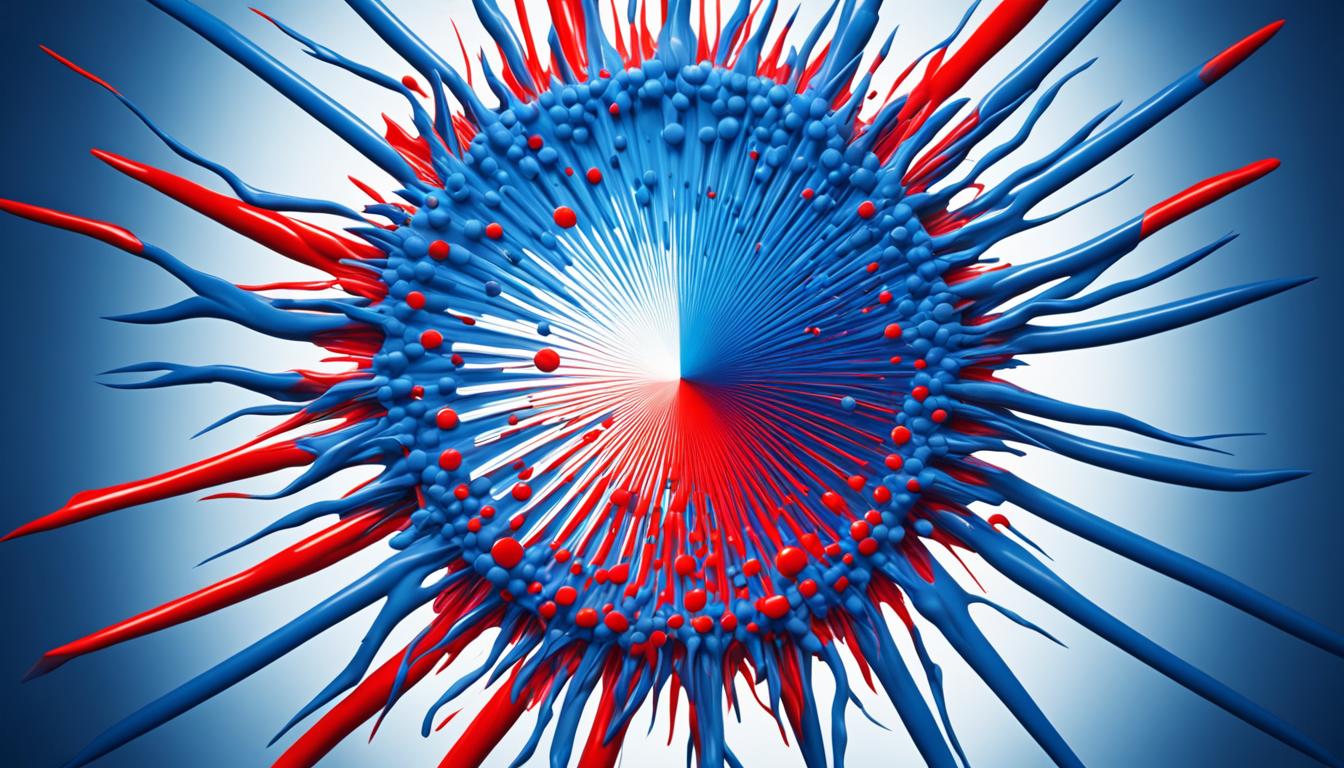PVPS stands for Post-vasectomy pain syndrome. It’s a condition where a person experiences lasting scrotal pain after a vasectomy. This pain can affect how they feel physically, mentally, and sexually. The main cause of PVPS is not known, but it may be due to nerve damage or swelling in the scrotal zone.
Doctors diagnose PVPS if the pain lasts over three months and hinders daily life. To manage PVPS, patients can try pain meds or physical therapy. For severe cases, treatments like surgery on the spermatic cord or stem cell therapy are options. Stem cell therapy can help by repairing tissues and lessening swelling in the sore area.
Key Takeaways:
- PVPS is a condition characterized by chronic scrotal pain that occurs after a vasectomy.
- The exact cause of PVPS is not fully understood, but it is believed to be related to nerve damage or inflammation in the scrotal area.
- Diagnosis of PVPS is based on the presence of chronic scrotal pain for more than three months.
- Treatment options for PVPS include conservative measures such as pain medication and physical therapy.
- Advanced treatments like microsurgical denervation of the spermatic cord or stem cell therapy may also be considered for PVPS.
Causes and Risk Factors of PVPS
The causes of PVPS, or Post-vasectomy pain syndrome, are not fully clear. But, experts think several things might lead to it. Things like nerve damage and inflammation in the scrotal area seem key. They can cause chronic scrotal pain and testicular pain after vasectomy.
Potential Causes of PVPS
Nerve damage and inflammation are not the only possible reasons for PVPS. Others include:
- Chronic epididymitis
- Hydrocele
- Spermatocele
- Testicular and paratesticular tumors
- Varicocele
Yet, we need more studies to confirm these links to PVPS. Remember, having these conditions doesn’t mean you’ll get PVPS.
Risk Factors for PVPS
Some risk factors make it more likely you could get PVPS. These include:
- A history of chronic pain syndromes
- Previous surgeries in the scrotal area
But, not everyone with these risk factors ends up with PVPS. We still need more research to understand PVPS fully.
Image:
| Potential Causes of PVPS | Risk Factors for PVPS |
|---|---|
| 1. Nerve damage | 1. A history of chronic pain syndromes |
| 2. Inflammation in the scrotal area | 2. Previous surgeries in the scrotal area |
| 3. Chronic epididymitis | |
| 4. Hydrocele | |
| 5. Spermatocele | |
| 6. Testicular and paratesticular tumors | |
| 7. Varicocele |
Diagnosis and Treatment of PVPS
Doctors check for PVPS when a person has ongoing scrotal pain for over three months. This pain must also greatly impact daily life. To diagnose PVPS, a doctor will do a detailed exam and may use tests like ultrasound or MRI. These help rule out other possible causes.
There are several ways to treat PVPS, depending on how severe it is and the patient’s needs. Treatment can start with simple methods like pain medicine, physical therapy, and nerve blocks. The goal is to reduce pain and improve the patient’s quality of life.
If the basic treatments don’t work, more complex options might be considered. For example, microsurgical denervation involves cutting nerves in the spermatic cord. This can stop the pain signal transmission. It can offer relief to some people with PVPS.
Stem cell therapy is also showing promise in treating PVPS. Stem cells can repair damaged tissue and lower inflammation. This therapy focuses on reducing pain and making the area work better.
Despite these advanced treatments, we still need more research to know how well they work in the long run. Progress in medicine might bring even better ways to help those with PVPS in the future.

